What equipment should I take with me for long term traveling, adaptable to different type of activities and weather conditions (including trekking and camping)? Here’s a list which strikes a good balance between weight, comfort, and adaptability.
I’ve done my research and read all possible articles on travellers’ blogs and specialised magazines about how to go trekking with a light backpack, or how to choose this or that piece of equipment etc. But I couldn’t find anything that would give me a complete overview of the type of equipment I should take with me for long-term travelling, solo or not.
I’ll probably be visiting cities, doing volunteer work, going for long treks in nature and high in the mountains, and so forth. Furthermore, I would like to try and work remotely, hopefully take nice photos and write on this blog, therefore I’ll be in need of some decent technology.
Weight, of course, is my main concern. Especially because I am not the type to hire porters to carry my stuff. If I had to go trekking only, I would be fine leaving with a very minimal gear or getting equipped specifically for that purpose. But I am not going to trek only…
So, after much reading, and searching, and thinking, and testing, and asking, and more thinking… well you got the idea, it was a real headache, but fun as well, I have finally completed my gear list for the trekker and world traveller.
In my search, I’ve focused on quality equipment that would give me a good balance between weight, comfort, and adaptability.
I’ve also weighted everything to have a good idea of how much I would be carrying. I will point out what I think is needed for trekking, and what is for general purposes of travel. The main idea being that I can leave behind in some secure location what I don’t need to trek.
Updated to May 2019. Here we go:
CLOTHING
Layers is the key word here, to be able to adapt to every weather condition. Therefore most of the clothes mentioned below are technical and quite expensive. It’s worth the investment though, good technical clothes are not only warm, they are also light, quick to dry, comfortable and durable. Nowadays, they also make them with style, so they can be used for city life as well. There are many good brands. However, the hyperlinks provided are only for stuff I actually use and feel confident in suggesting to others.
With the full gear on, I should be able to withstand temperatures at about minus 10 C.
√ 1 x warm hat / Winter hat (80gr)
√ 1 x sun hat (90gr)
√ 1 x bandana (30gr) Very versatile to protect against the sun and insect, in different ways.
√ 1 x sunglasses (40gr)
√ 1 x long sleeves merinos base layer (150 gr) – I love merino items, especially Icebreaker, but after a year travelling I haven’t put this on once, not even above 5,000 m. So, it’s out of the list.
√ 5 x t-shirts (700 gr) – Only two are needed for trekking, one for the day and one for the night. In the bunch I got a couple of Icebreaker merinos which are expensive, but definitely my favourite: they are light, quick to dry, and odourless even after a couple of days sweating in it, and durable. For tropical and warm countries a couple of colourful undershirts can be convenient, I have transformed two of my old T-shirts for this purpose. There are good and cheap tailors all around Asia 😉
√ 1 x technical fleece (400 gr) – This is a warm mid layer, absolutely needed for trekking, and can be used for any other occasion as a sweater. After much research, I decided to go for a hoodless Arcteryx Fortrez, as in many reviews appeared to be both warm and light, which is what I was looking for. So far, I am very satisfied with it.
√ 1 x down jacket (400 gr) – I must say I almost never put this on while trekking, but it comes in handy afterwards, when in need to keep warm at the campsite or shelter, or in a city for that matter. I have an Arcteryx Atom LT Hoody for many years now, it’s super light, warm enough, compact to pack, it really does the job I got it for. If I have to find a negative, it’s the fit of the hood, a little loose in the model I bought. But this was years ago, perhaps the issue has been solved.
There are warmer and less minimalist models, it depends on what you are looking for. In the battle synthetic vs natural insulation, I definitely go with synthetic, much faster to dry, and in general fewer problems in wet weather.
√ 1 x rain jacket/wind stopper (500 gr) – I own a Mammut Jacket for many years now, and it still works perfectly. I’d like to tell the model, but I think they don’t make it any more, and I can’t remember 🙂 If anything, this tells something about the durability of the item.
By looking at the website, I believe the evolution of my model is a Masao Light HS Hooded, which is lighter than mine (only 340 gr). But hey, not going to bin a jacket that still works.
Mammut has its own rain tech material, which has worked well for me so far. Of course, if you use it a lot, and I did use it every day in winter at home as well, from time to time you need to treat it with a water repellent product (please choose a biological one).
√ 1 x warm gloves (180 gr) – I own a pair of Mammut gloves for a long time, they make it much lighter now, but I don’t have much advice to give on gloves as my hands are normally fine even when very cold.
√ 2 x long trekking pants (700 gr) – I got a pair of Vaude that becomes short on the occasion, I find it useful but some people find there’s some discomfort in this. As for the brand, love the materials of Vaude, very comfortable, breathable, light and quick to dry. I used them also to walk around cities, do yoga or meditation, basically my main outfit when travelling!
I have a second pair of paints. I couldn’t find a pair that become shorts, so these are just normal and light material, not so technical. A good spare for all needs.
√ 1 x swimming pants (175 gr) – They work as well as regular shorts for warmer weathers or to put on when in need to wash the others. Absolutely needed for me.
√ 1 x rain pants (230 gr) – Here’s a link to see several models. However, in 6 months I haven’t used them once so they are out of this list. In the end, legs can get wet, as long as there’s always a dry change in the backpack.
√ 1 x tech towel (150 gr) – there are many models on sale in every mountaineering shop or online. Light, convenient, and quick to dry, a must have.
√ 1 x belt (40 gr) – I got one of those travel security money belts with a hidden zip on the inside. So far no problems, not like I have been attacked by anyone, to tell the truth. But the belt works well, and it’s resistant.
√ 1 x sandals (500 gr) – used them a lot in warm countries. They are still in good conditions, so I am keeping them, but I would go for something lighter when the time comes.
√ 1 x trekking shoes – No boots for me, too much space and unusable outside the mountains, although for some people might be important to have ankle support. For me, it’s more important to have walking sticks to keep the balance, and shoes with a good grip.
I found my perfect match with a Scarpa model, light, breathable, made with gore-tex technology.
I used it on all terrains, from the Himalayas (above 5,000 m) to the jungles, and I always had my feet dry and comfy, and not a sign of blisters. Although my model is not on the market any more, I believe this is a good brand for mountaineering footwear.
√ NEW – 1 x super light running shoes (300 gr) I travelled for a long time only with trekking shoes and sandals, but at one point I felt the need for more comfy shoes that I could use for city walking or go training or for a run. So I got some super light running shoes. In the end they don’t add much weight and they do come in handy.
√ 1 x pair gaiter – I got very light ones, basic, and used them only once. They did not work very well. The lesson is, if you bring gaiters, just bring good models or nothing. So they are out of the list, in case of need, I’ll rent some.
√ 2 x trekking socks (180 gr) – Here, I go for the classic. But technology is advancing, if I try something new I’ll report.
√ 2 x regular socks (120 gr) – not needed for trekking
√ 5 x underwear (350 gr) – Only two or three are needed during the trek, they can be hand washed daily (like the t-shirts) and let dry overnight or during the day tied on the backpack. I made an investment and got some merino underwear, pretty cool stuff 🙂
BACKPACKING EQUIPMENT
√ Backpack 60 + 15 litres (1,450 gr) – After much searching, and reading up, and almost going crazy, I have decided to change my old backpack for a ULA Camino 2, much lighter but with still a lot of capacity and strong enough for long-term travelling. It does not have any side, top or lower zipped pockets, but it does have a front opening for comfort when packing and unpacking, and two quite sizable pockets on both sides of the belt.
There are much lighter packs for minimal trekkers on the market, but they are basically just tubes with a single top opening. I could handle this for the duration of a trek, but really, not for a whole year and in every situation. This backpack looks like a good compromise. I love it by the way!
UPDATE: if possible, after a year, I love it even more!
√ Backpack rain cover (100 gr). Necessary, it doesn’t have to be the same brand as the pack, any rain cover of the right size will do. I had a spare one at home for example.
TRAVEL TIP: use it every time you move around, on buses, trains, planes etc. It really increases the durability of your pack and keeps it cleaner.
√ Smaller pack 18 litres (600 gr) – I own an Osprey Escapist model for many years now, I love the durability, comfort, and the fact that the capacity can really be fully used! Osprey makes great backpacks, although I didn’t find my love when it comes to bigger packs, they do offer a lot of choices.
Ideally, a small backpack should be left behind, along with some other unnecessary things, when trekking. However, I find it extremely useful to have for travelling. Perfect for 1-2 days trips and everyday use, for example, to carry valuables, the laptop etc.
√ Water bottle (100 gr) – I have opted for a LifeStraw bottle to take with me, with a water purifier system. It’s quite small and light, so it needs to be refilled often. On the positive side, no need to buy plastic bottles, which causes so many problems for the environment. With this, I can drink tap water or river water, no problems.
UPDATE: the filter has been performing well. So far, no problems. If you want to be 100% sure about the water you drink, then you can use both the filtering system and water purifying tablet. The latter only for short periods.
√ Laptop (1.850 gr including pocket and charger) – needed to work, write, edit photos, and, well have a life nowadays apparently. Obviously, not to be carried on the mountains, or it’ll break.
UPDATE: I have purchased last year a Dell XPS 13. I’ll probably write a more extensive review about this little jewel, for now enough to say it performs great for any digital nomad kind of work (Read, I love it!). On the other hand, it is an expensive laptop, which competes with the best ultrabooks on the market.
√ Trekking poles (360 gr) – Some people do without, to me they are essential, very important especially for people that have weak knees or ankles. This is not an expensive article, light and durable is what you are looking for. No specific brand to recommend.
√ Compact camera (1000gr) – Unless your heart is content with the quality of your phone pictures, in which case you can spare yourself this extra weight.
I had chosen a Panasonic Lumix DCTZ90 to start this journey. There were many reasons for this choice: price, long-range zoom, weight, RAW formats availability, and more. The camera has been performing fine, as advertised I would say, you can check the photos from Nepal BUT…
I have realised I really enjoy taking photos, and as a blogger I wanted a better photography game. So, I got myself a Sony RX10 M4, which is probably the best-fixed lens camera on the market right now. I have been using for all the photos in India, China, Cambodia, Thailand, Malaysia, Borneo, Sri Lanka and Japan.
√ E-book reader (180gr) – Some minimalist trekkers go without anything to read. But again, this is not only for a trek, and I can’t live without books. This does not mean that I don’t buy books any more, I still do, especially local novels or cultural books from wherever I travel. Normally I leave them in a hostel or something, so I don’t have to carry them around. But an e-book reader gives me a much wider choice.
No one will ever separate me from my Kobo Aura! Apart from when it breaks because I sit on it during a trek high in the mountains 🙁
TRAVEL TIP: a sleep cover increases the durability of your e-book reader. It did endure many travels, and sometimes shit happens. The reader works great, and most importantly reads files in ePub format, which means you can find lots of books for free online. Otherwise, ask me, I have many 😉
√ Headlamp – Absolutely necessary. Bring extra batteries too. Many models out there.
√ Phone (200 gr) – If you can do without you have all my admiration 🙂 Jokes aside, technology is useful for safety as well, just turn it off when it’s not necessary.
√ First aid kit (250 gr) – This should include a basic pharmacy, such as painkillers, antibiotics, medicines against diarrhoea, antihistamine, Malarone against malaria if you plan to go in such areas of the world. I read some articles stating all these medicines are not necessary, as they are rarely used. In my experience, they have been useful and I always carry them along. In order to make it more efficient, I trash all the paper boxes then put everything in a hard plastic box, like a small tapper ware, to avoid crushing them.
CAMPING EQUIPMENT
Carrying a self-sleeping system is a good way to spare money, be more independent, even a solution in some difficult situations, let alone that beautiful feeling of waking up in the morning, opening the tent and enjoy a breathtaking landscape.
√ Ultralight 2 person tent (1,560 gr including footprint) – This was the second hard decision to make after the backpack, I really did a lot of reading. In the end, I went for REI’s Big Agnes Copper Spur HV UL 2, a three-season tent, with a lot of space and very easy to set up. It isn’t perfect, there are lighter tents, warmer tents, tents for all four seasons, but hopefully, this one will do fine in most conditions, and for the rest, I’ll adapt. The idea is to use it a little bit everywhere in any case.
UPDATE: I have pitched it several times above 4,000 m and it behaved really well, also when raining for the whole night. Once at minus 6 C., frozen snow falling, I slept like a baby!
√ 1 x sleeping bag (1,500 gr) – Any sleeping bag marking comfort at zero degrees Celsius is a good all round bag. Mine marks comfort at minus 6 C. In reality it’s a zero. I have a 10 years old Millet, a little heavier than new ones in the same category, and than what I would ideally carry. But I didn’t feel I had to make an investment here as it is still in perfect conditions.
√ 1 x gas stove (about 200 gr) – Never used it. I have decided to rent this kind of equipment when I need it instead of carrying it around.
√ 1 x ultralight inflatable mattress (400 g) – I got a Therm-a-Rest NeoAir XLite mattress. Expensive, but I tried it out and wow! There’s no comparison with a regular sleeping mat. It is lighter, warmer, easy to inflate, and way comfier!
TOOLS AND SMALL OBJECTS BAG (900 GR)
TRAVEL TIP: I have bought some ultralight water resistant bags and compartmentalised my backpack. Not only it helps with the organisation of the pack, but they can also be used to gain space as they can be sealed after pushing out the air. Furthermore, your stuff will always be protected from water. I also use them for the camera (when I go trekking for example) and the computer when it rains or in humid environments.
√ One of these bags contain the following useful small objects:
- A small sharp knife, and a plastic spoon/fork thingy
- Chargers, cables, and a worldwide adapter
- Pens
- A couple of lighters
- A headlamp with extra batteries
- Two small lockers. It doesn’t sound like it, but they are very useful. I used them every time I slept in hostels, they can be used on public transport for long rides, and on many other occasions.
An inflatable neck pillow for the aeroplane or long bus rides.I didn’t really use it and it was a bit annoying to carry around. I dumped it.- Small reparations kit for holes in the rain covers and the like
- 3 x super light cotton bags for dirty laundry, shoes etc. Why? Well, using plastic when travelling is really not environmentally friendly, and after a while plastic bags smell really bad. These cotton bags are no heavier than plastic ones (like 30 gr each), they can be washed, and re-used. I lost two but one is still being used for dirty laundry after a year 😉
TOILETRY BAG (1,000 GR)
These are all general items to bring on a long journey. What and how many products should be brought along when trekking is as much a debated subject as it is subjective. Needless to say, the less the lighter, and these are items that can add a lot of weight to the pack.
As for the bag itself, I opted for a Sea To Summit bag, it can open vertically, with a hook at the top. This is really handy when camping or in some situations where there are no flat surfaces to put the case on.
This item normally comes with me also when trekking, although I kind of make it minimal, and I put some necessary items from the tool bag in this one so that I can take one container only.
√ It contains the following:
- Biological soap – one that can be used for everything: showering, hand washing clothes, cleaning dishes. This is perfect for treks
- Soap: I refuse to use single-use plastic containers and chemical products, so I just bring along a regular, plant-based soap in a reusable container
- Cleaning gel for hands – optional
- Sun protection
- Lips protection
- Dental floss
- Toothbrush
- Toothpaste – possibly plant-based and without chemicals so it won’t pollute the environment
- Deodorant – optional 🙂
- Small scissors
- Nails cutter
- Insects repellent – optional
- Condoms
DOCUMENTS POCKET (350 GR)
Well, we have to carry around a bunch of documents when travelling, there’s no escaping this. I keep them in a sealed water resistant pocket just to avoid accidents. A ruined passport can be a real bother. Normally, this pocket comes with me wherever I go.
√ The pocket contains the following:
- Passport and IDs
- Some spare passport photos for visas, especially if entering a country via land it can be handy to have the photos ready
- Driving license, including international driving license
- Diving book log
- International vaccination card
- A small notebook
- Some spare money: I guess this will get lighter over time 🙂
This is it, I think, I hope, I think. Let’s do some final calculations then:
LIGHT SCENARIO
11 Kg to 12 Kg including the weight of the backpack, the tent and camping equipment. The gap in the indicated weight depends on the personal hygiene products and other small things.
This weight, however, excludes water and/or food, which could amount to 2-4 Kg depending on needs. This is therefore as heavy as it can be. More would probably be too much.
FULLY LOADED SCENARIO
About 16 Kg among both packs, excluding water and food. This is not bad for a year-long journey, but a little too heavy to trek. Hopefully, I will always find a way to drop the extra weight, things I don’t need, somewhere safe when I go spending time in nature 😉
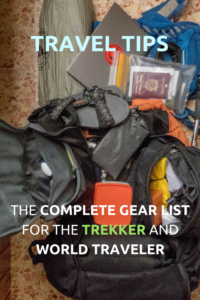
xxx
Viva the transparency! There are affiliate links in this article. This means if you click on a link and end up buying (or booking) through those websites, I’ll get a small commission, at no extra cost to you. This helps me maintain the blog, and continue to provide (hopefully) useful travel information. I promise to never, ever advise products I haven’t tested myself!
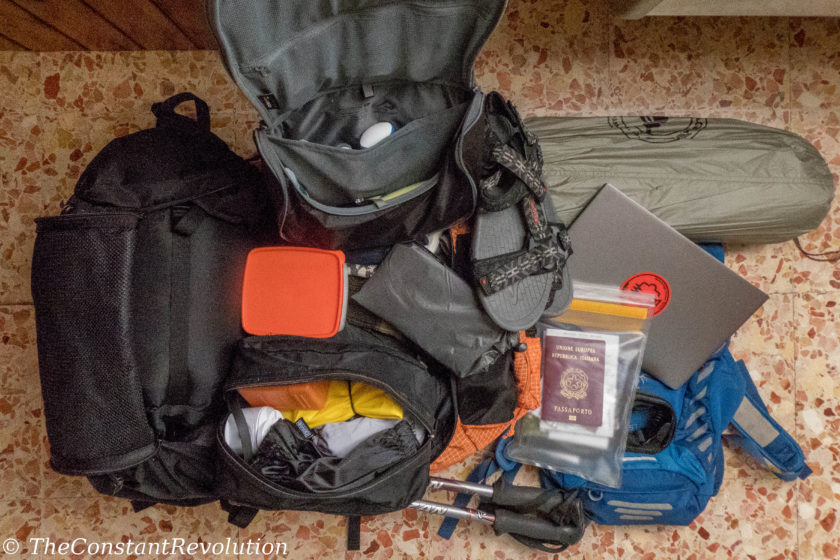

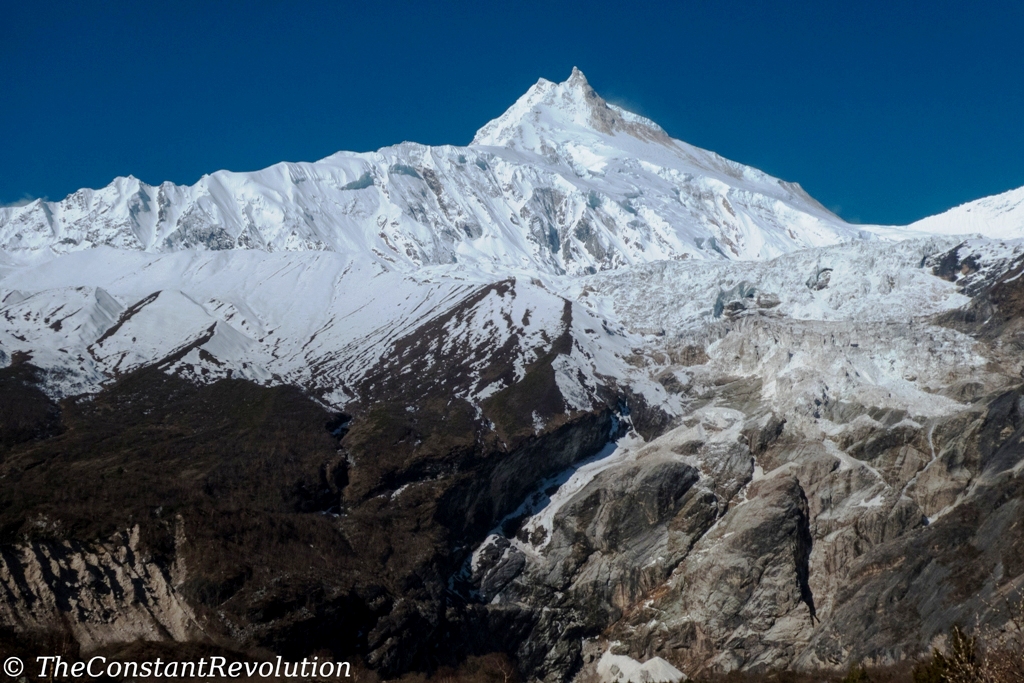
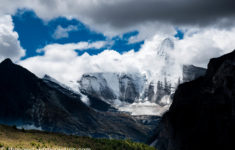

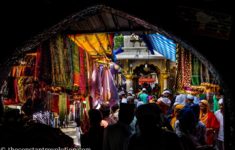
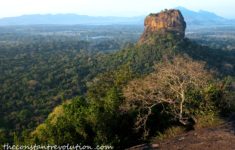
Hey Paulo!
Tried to contact you via email, but I couldn’t get a hold of you (This is Daniel, the illegal backpacker from Jagat.) Just trying to get in touch!
If you’re interested, my blog is http://www.cloudwalkingsite.wordpress.com
Cheers!
Daniel Liu
Hey Daniel, got it 😉 hope you are enjoying Nepal after all. Just back from the circuit mysef…
Paulo,
I am interested in getting a list to travel like yours. I am planning on heading to the Balkans for 6 months with some extensive trekking, camping and living. I wanted to know how you travel on airplanes and around europe with your backpack and the camping equipment. Can you take the pack as carryon or are your forced to check? What are your strategies for packing?
Hi Andy, sorry for the late reply. Unfortunately, despite all calculations for lightness, the backpack is too big for a carry on luggage, so it must be checked in. Also because some equipment cannot be carried on anyways, like walking sticks 🙂